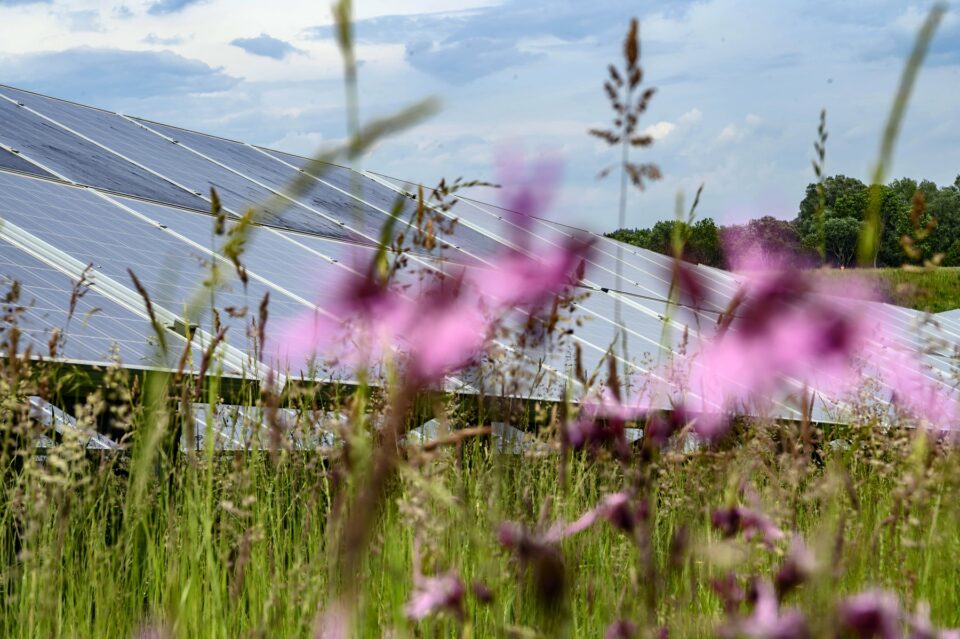The aim of this study is to show whether and to what extent solar parks can contribute to floristic and faunistic biodiversity. For this purpose, documents on the vegetation and fauna of 75 solar parks in Germany were evaluated. However, the studies and investigations available for the parks, spread over 9 federal states, were mostly compiled during the approval phases for the parks and are very heterogeneous. Nevertheless, it was possible to use documents from just under 40% of the solar parks considered for evaluation. For some parks, intensive studies are also available, partly as a comparison of their states before and after, so that meaningful conclusions can be drawn. From this it can be deduced that solar parks have a fundamentally positive effect on biodiversity and what structures can help increase biodiversity, especially with regard to the distance between the rows of modules and maintenance of the spaces between the rows. In addition to an evaluation of the appropriate documentation with regard to the characteristics of the vegetation and the colonisation of the parks with different animal groups, this study describes some parks in more detail by way of example. Finally, information is provided on the content, structure and scope of future monitoring studies. One goal of such monitoring could be to develop uniform minimum standards for the construction of solar parks in the medium term.
The main results of the evaluation of the available documents are:
- The use of land for solar parks should be seen in a fundamentally positive light, as it can lead to an increase in the value of the land in terms of the preservation of biological diversity, in addition to its contribution to climate protection through the production of renewable energy.
- Using land for solar installations can have a clearly positive effect on biodiversity if they are designed to be compatible with nature.
- One of the main reasons for populating solar parks with diverse species comprising sufficient individuals from different animal groups is the permanent extensive utilisation or maintenance of grassland in the spaces between the rows. This clearly distinguishes these sites from sites used intensively for agriculture or sites for energy production from biomass.
- Solar parks can promote biodiversity compared to the surrounding landscape. This is substantiated in the available documents for butterflies, grasshoppers and breeding birds.
- There is sometimes a clear difference between solar parks with wide and narrow spacing of rows. Wider sunny strips between module rows increase the density of species and individuals. This is documented in the colonisation by insects, reptiles and breeding birds. This has been demonstrated particularly clearly for the sand lizard.
- The evaluation of the documents also reveals a possible trend in the difference in importance of small facilities compared to large facilities: While smaller facilities act as stepping stone biotopes and can thus maintain or restore habitat corridors, large facilities – if properly maintained – can create sufficiently large habitats that enable the preservation or establishment of populations of, for example, sand lizards or breeding birds.
- Solar parks on conversion sites can help stop the succession of vegetation that leads to the loss of open, sunny habitats.
- Further investigation is required. In particular, there is often no monitoring of the colonisation of the solar parks after construction of the facilities. However, it can clarify the importance of solar parks for the densities of species and individuals of different animal groups.
Authors of this study are:
- Rolf Peschel, Der Projektpate, www.projektpate.eu
- Dr. Tim Peschel, Peschel Ökologie & Umwelt
- Dr. Martine Marchand
- Jörg Hauke

